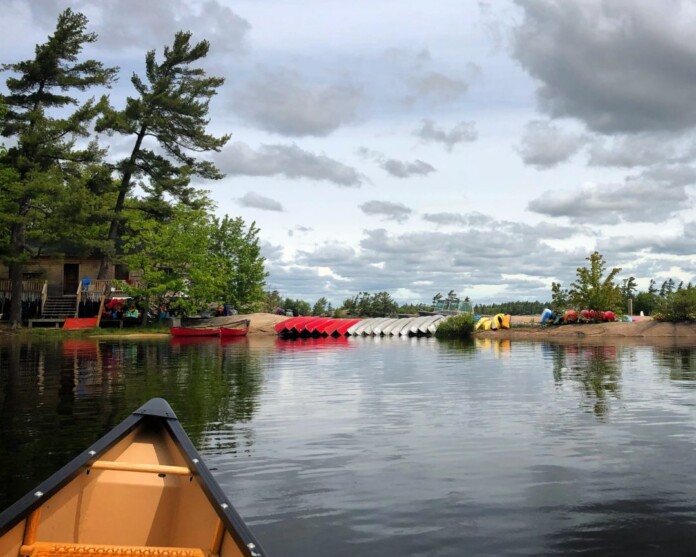There are few things I love more than paddling. I love how intimately you can explore a place from the water, the peace and quiet, the physicality of each paddle stroke. Whether it’s in a canoe or a kayak, I am at home on the water.
While kayaking and canoeing are both great modes of adventurous transportation, the best boat for you will depend on the water you’re paddling on, the trip type and your preferences. So, let’s look at the differences between kayaking and canoeing and what will be best for you.
In this post I’ll use the following sections to compare canoeing vs kayaking:
- Basics Difference between Canoes and Kayaks
- History
- Types
- Gear
- Ideal Bodies of Water
- Ideal Trip Length
- Best Destinations
This post may contain affiliate links. If you make a purchase through one of these links, I may receive a small commission at no extra cost to you. Your support is much appreciated! You can learn more by reading my full disclosure.
Canoeing vs Kayaking: The Main Differences
The main difference between canoeing and kayaking is in the seating and the paddle. In a canoe, you sit on a seat raised above the hull of the boat and paddle on a single side of the boat. In a kayak, you sit directly on the hull and paddle on both sides.
There’s more to it than that though, so let’s dive in!
Canoes
The most obvious difference between canoes and kayaks is the seating. In a canoe, the top of the boat is open to the sky (this is called an ‘open boat’ style). Seating is bench-style, so you sit above the hull of the boat, rather than directly on it.
To paddle a canoe, there are usually two paddlers and each has a single blade paddle with a T-shaped handle. One person is responsible for steering while the other is paddling for power (generally speaking).
Canoes are excellent for day trips, but they really shine with multi-day trips. The open and spacious hull allows for plenty of gear. Canoeists will also tell you that canoes are easier to portage than kayaks (I think they are!), though there’s a little debate around that.
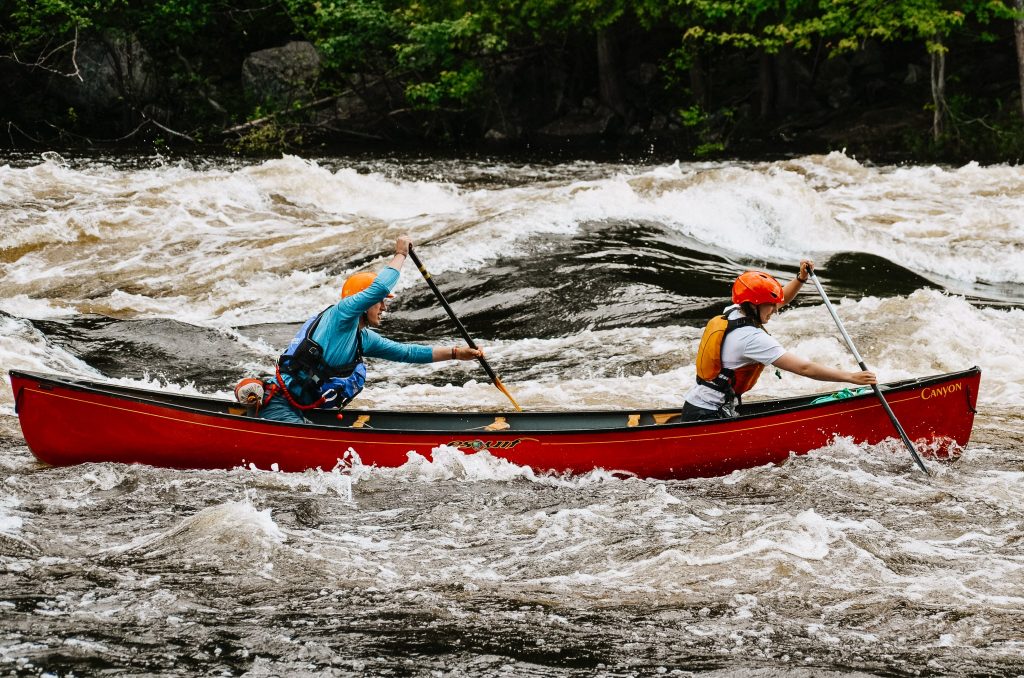
Kayaks
Kayaks are the sportier siblings of canoes. They are considered a ‘closed boat’ because the hull is covered, except for the cockpit where the paddler sits. The paddler sits very low in the water with a seat molded into the bottom (one exception to this is the sit-on-top kayak).
When paddling a kayak, a double-bladed paddle is used to keep the paddler from having to swap sides. Kayaks are often one-person boats, so you are responsible for all paddling and steering. There are also tandem kayaks for two people, but paddlers still use a double-bladed paddle and paddle on both sides of the boat.
Typically speaking, kayaks have less storage than canoes. That said, there are expedition sea kayaks that can handle quite a lot of gear.
Which boat is tippy-er? In general, both boats are very stable. From my days as a camp instructor for canoeing and kayaking, I saw that neither boat is very easy for beginners to tip, but tipping was more common in recreational kayaks than canoes. That said, sea kayaks can smoothly glide over huge waves, where a canoe (with its open hull) might take on water and tip. Whitewater kayaks are super tippy, but an experienced kayaker can right the kayak from any position.
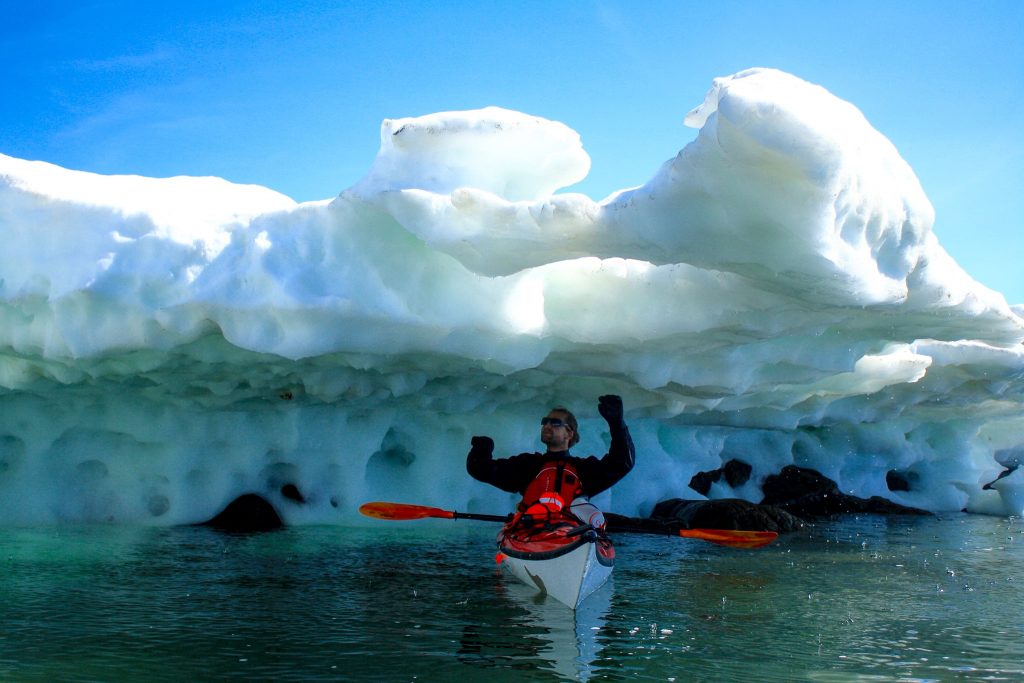
History of Canoeing and Kayaking
I’m not a historian, so I won’t spend too much time on the history of the two different boats. Though I do want to use the section to acknowledge that both canoeing and kayaking originate with Indigenous People, especially considering most of the representation we see in modern canoeing and kayaking is of white people.
Canoes
Canoes are one of the oldest styles of boats, originating in various places around the world over the course of history. The term ‘canoe’ was introduced to the English language from the Spanish/Portuegese word ‘canoa‘, which originates from the Arawakan word ‘kanawa’.
The oldest canoe ever found is a Pesse canoe discovered in The Netherlands, dating back to 8200 to 7600 BC (source).
Since I’m Canadian and learned to canoe here, let’s deep dive into the history of canoes on Turtle Island for a moment. Indigenous People of what is now North America have been using canoes for thousands of years (you may be familiar with birch bark canoes or cedar strip canoes, which are Indigenous creations).
They were made from timber frames with bark or animal skins stretched over to form the hull. Canoes could be of various sizes: some were smaller to accommodate one or two paddlers; while others, like the Voyageur canoes, could hold over a dozen people.
Canoeing became popular among white settlers in Canada and some parts of the US during the 1700s and 1800s, especially with the Voyageurs.
These were French and Metis settlers working with Indigenous People in the fur trade. While canoeing isn’t used for trade currently, canoeing has remained a recreational activity in Canada and some parts of the US (source).
Kayaks
Kayaks originated in the arctic more than 5000 years ago and have been used by Indigenous People throughout the Canadian Arctic, Alaska, Greenland and Siberia.
The original kayaks were designed for a single person, with the lower seat to keep the frigid water from getting into the boats when hunting on choppy ocean waters. The frame was constructed of wood or whale bones and covered with stretched animal skin (often seal skin).
Kayak means “man boat”, from the Greenlandic word “qayaq” or the Inuktitut word “qajaq“. Original kayaks have been found in North America, Siberia and Greenland. Indigenous people would use them for hunting and fishing (source).
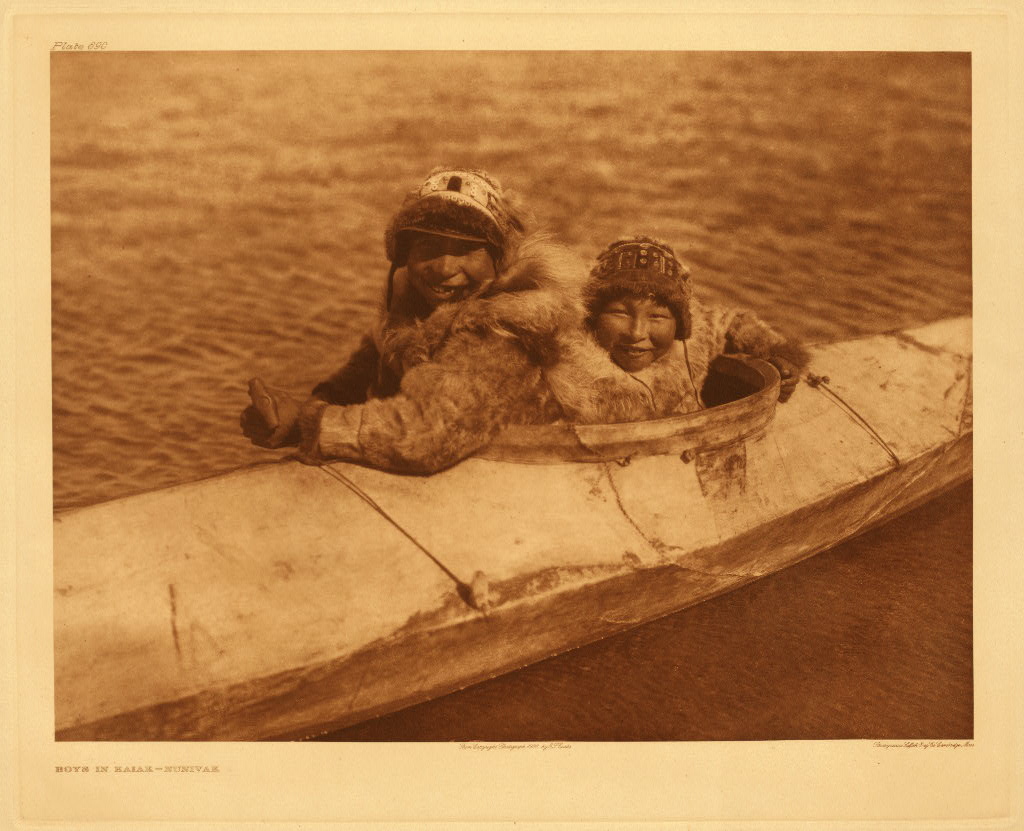
Types of Canoes and Kayaks
Now that we know a bit about kayaks and canoes, it is important to note that there are several different types of both boats. They have been designed to handle different types of water and experience levels.
Canoes
Flatwater Canoes
As the name suggests, flatwater canoes are designed for flatwater, which basically means any body of water that doesn’t have rapids. There are a few features of flatwater canoes that distinguish them from whitewater canoes.
For starters, flatwater canoes are designed to move in a straight line, so they often have a keel running down the center of the hull. This helps the boat stay straight, though inhibits maneuverability (something we want in whitewater).
Since a flatwater boat isn’t getting banged up against rocky rapids, the material doesn’t have to be as strong. As a result, flatwater canoes can be made with lighter materials – like Kevlar – which make them much lighter and easier to portage.
Flatwater canoes also tend to be longer. It’s common to see canoes be 17ft or 18ft long, and some can even accommodate a seat in the center for an additional paddler.
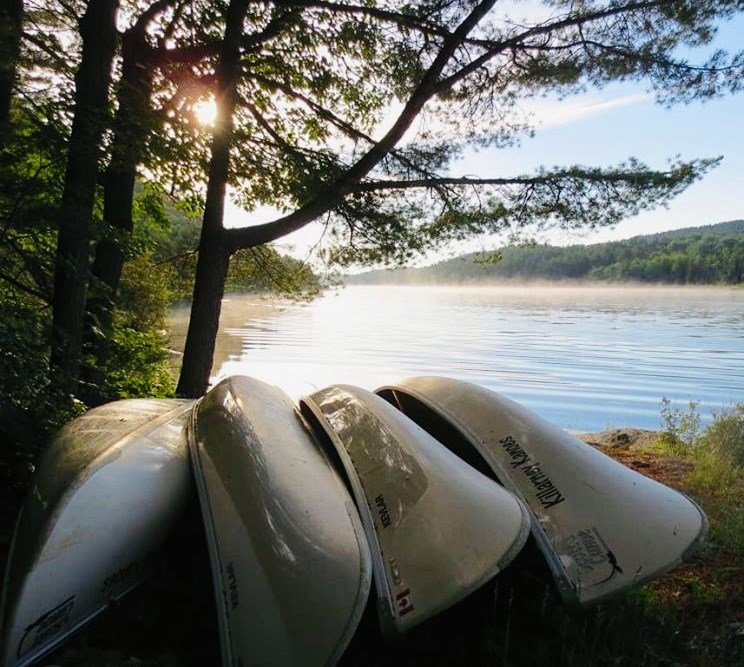
Whitewater Canoes
A whitewater canoe is made of durable plastic that can get bashed into rocks and come out (reasonably) unscathed. The canoes also tend to be shorter than flatwater boats (like 11 ft for a solo or 15 ft for a tandem) though they can come as long as 17ft.
Finally, whitewater canoes have a larger rocker, which means the hull is more curved (so the centre of the boat sits a little lower than the front and the back). The shorter length and larger rocker make the boat more manoeuvrable.
The canoe is then outfitted for whitewater. Airbags are typically put at the front and back to keep water from splashing into the canoe; thigh straps and knee pads are installed in front of the seats so you can comfortably paddle on your knees.
If the canoe will be paddled in whitewater with lots of volume, paddlers will out a spray deck over top to prevent any water from getting inside.
There are two drawbacks to whitewater canoes. The first is that they are significantly heavier than canoes made from kevlar, so portaging is harder. The second is that they are designed to be highly maneuverable, but this can make it difficult to paddle in a straight line during long stretches of flatwater.
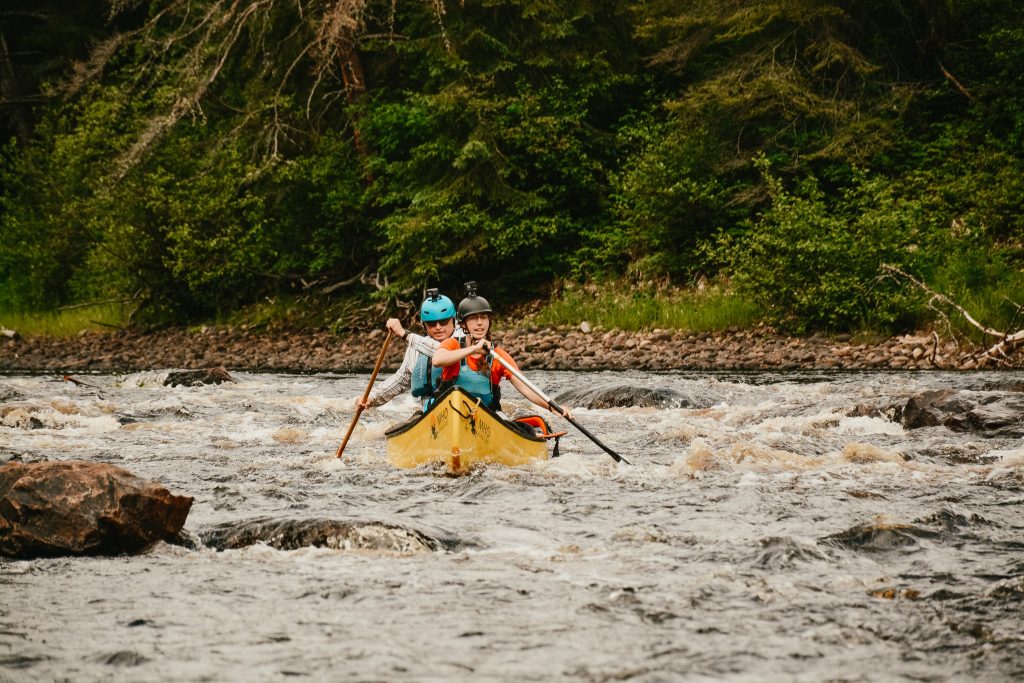
Tandem Canoes
When you imagine a canoe, odds are you are seeing the image of a tandem canoe. This is the standard type of canoe and one of the first ways people distinguish between canoeing vs. kayaking. Each person has a one-sided paddle, and the work is evenly distributed.
Tandem canoes have plenty of space in the hull for gear and are excellent for multiday trips.
Solo Canoes
As the name suggests, a solo canoe is for one person. They are quite similar to kayaks, but the open hull and seat ensure they are still canoes. Plus, solo canoeists still use a one-bladed paddle. In flatwater, the solo canoeist only paddles on one side of the boat and sits a little off centre, using their weight distribution and technical strokes to keep the boat in a straight line.
In whitewater canoeing, the paddler sits in the centre of the boat and paddles on both sides of the boat. It’s pretty impressive to watch!
Some people will paddle solo in a canoe using a kayak paddle, as it allows them to paddle quickly without learning the techniques of solo canoeing. Why not just use a kayak then? Well, a canoe still offers more space in the hull for food and gear.
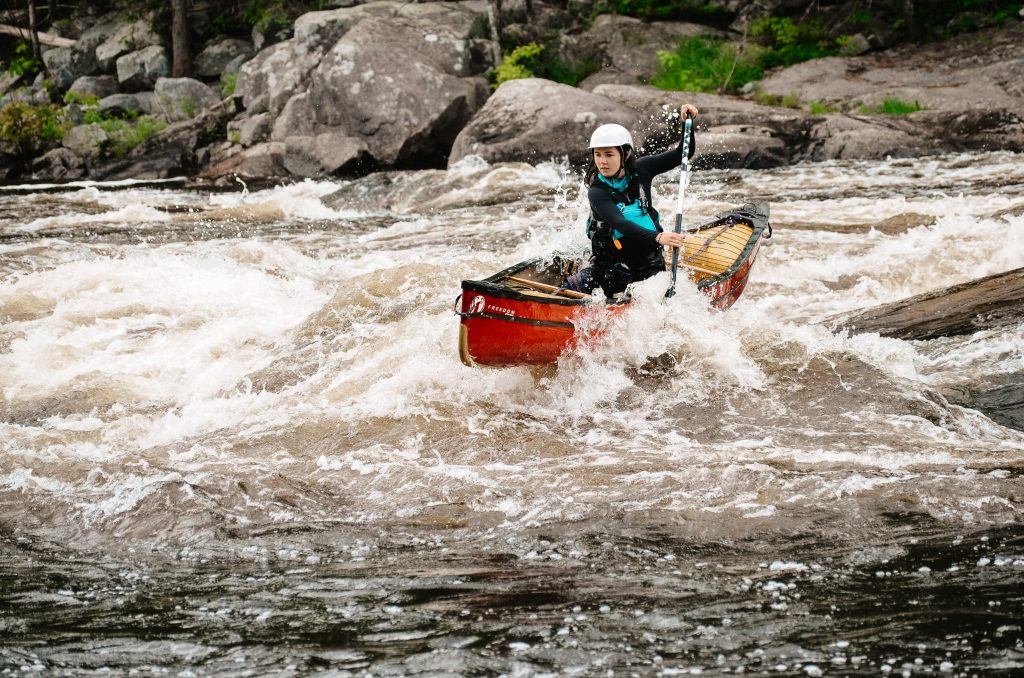
Kayaks
Sea Kayak
Sea kayaks are designed to handle the rough conditions of ocean water. They are typically 12-18 feet long and are longer and slimmer than a recreational kayak. Sea kayaks are designed to be fast, travel long distances and remain stable in large, rough water.
This type of kayak will also have more storage space since they are built for a long-haul kayak adventure. A longer shape will also make the boat more agile, and you will have a harder time flipping over.
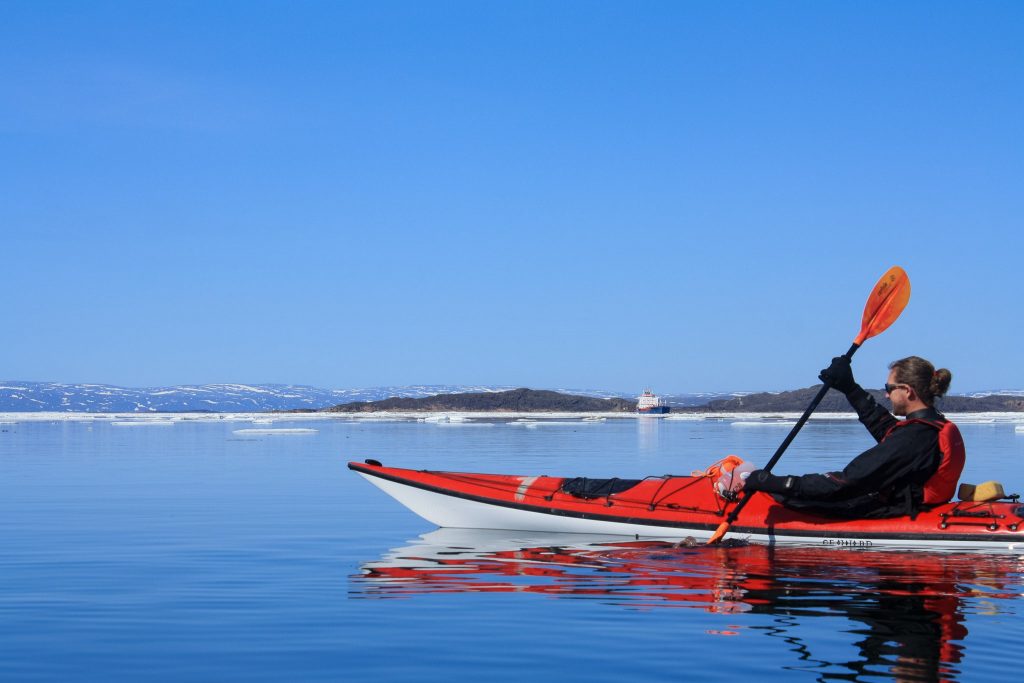
River Kayak
River kayaks are much smaller than sea kayaks. They range from 9-12 feet long and are typically wider. River kayaks are designed to be highly maneuverable, and as such, don’t have room for much additional gear.
How the hull and rocker are designed will dictate how the kayak sits and moves in moving water. I’m not much of an expert on river kayak design and there is a ton of variation that goes into designing a river kayak. This is a great post to read for an understanding of the different types of river kayaks.
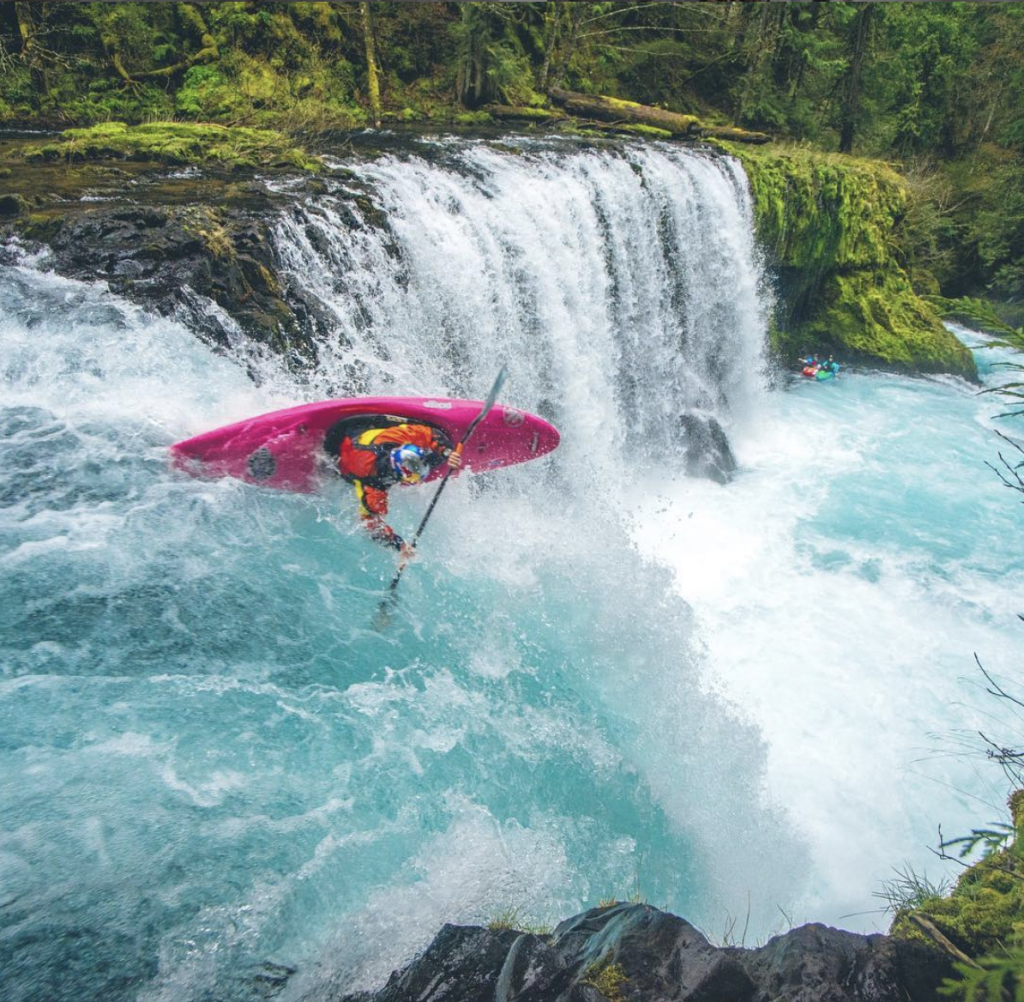
Inflatable Kayak and Foldable Kayaks
These types of kayaks have become popular for casual kayakers doing day trips on the water. As the name states, an inflatable kayak is filled with air and can be collapsed when not in use for easy storage. The drawback is that they aren’t as durable as hard plastic kayaks.
Foldable kayaks are an even more recent invention. These origami kayaks
Inflatable kayaks are typically designed to hold more than one person and are great for families with young kids that want to get everyone out on the water. They are similar to a canoe, but paddlers use a double-sided kayak paddle.
Sit-on-Top (SOT) Kayak
A SOT kayak looks different from other kayaks, as this type of kayak does not have a lowered cockpit. SOT kayaks are great for beginners and paddling on calm water. They are easy to steer, and easy to get in and out of since you don’t have to get into a low cockpit. If you are planning to do any fishing or diving, SOT kayaks are also great for that.
Gear
Both canoeing and kayaking require the same type of gear, though there are a few nuanced differences.
Boat
The first thing is that you will want to choose the type of boat that you want! It will depend on the type of trip you’re taking (more on that below).
Boats can easily be rented at most recreational areas, but if you are looking to buy your own it’s important to do your research and shop around.
Go to a local retailer (send me a message if you’re looking for one) so you can talk to someone that will answer your questions and help you get exactly what you need instead of guessing online. Since boats are a big tickle item, a lot of retailers will let you test out the boat before you buy it.
Paddle
There are two main paddle designs. Single, and double-sided paddles.
Canoes generally use a single-blade paddle since there are two people in the boat. Each person has a paddle and one will steer while the other contributes paddle power to keep the boat moving. That said, sometimes solo canoeists will use a double-bladed paddle.
If you are using a kayak, you will be using a double-sided paddle. This paddle style makes it easier for a solo paddler to row on each side without having to switch for every stroke.
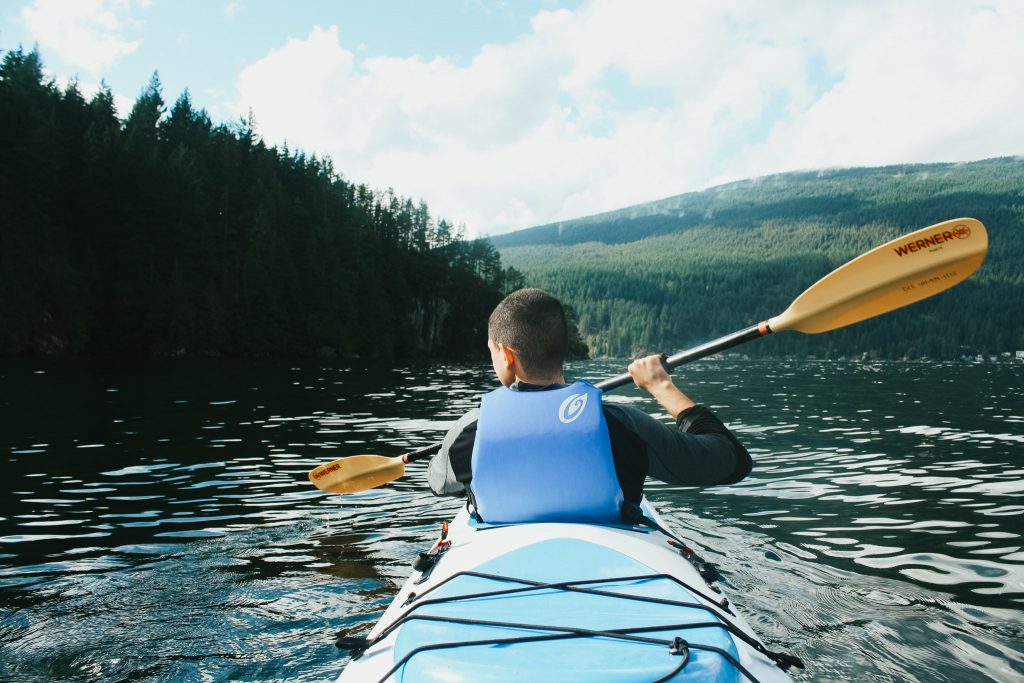
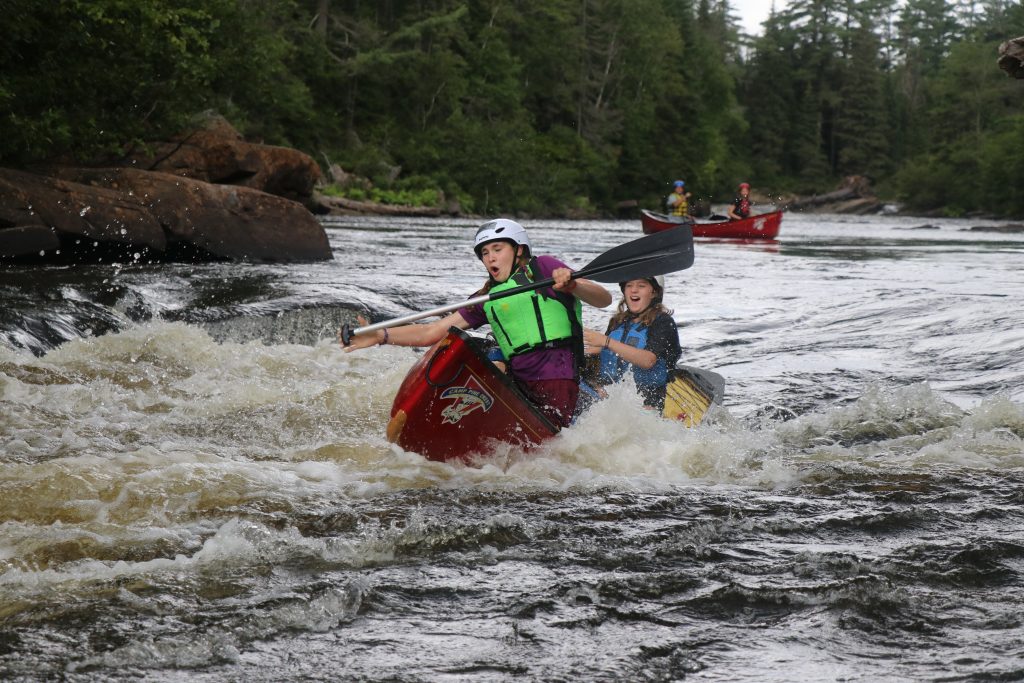
Accessories
There are plenty of accessories that can be added to modify your canoe or kayaking experience, but there are accessories that are essential for both other than the paddle:
- Life Jacket – Here is a list of the best paddling life jackets
- Bailer or Bilge Pump – This is used to remove water from the boat if it gets in there to prevent it from capsizing or annoyance just from some water being in it. A canoe typically uses a bailer and a kayak typically uses a pump.
- Boat Sponge – This is used to soak up excess water and is only used in a kayak
- Tow Line / Rope – Helpful if you need to tie the boat to something or tow the boat behind another boat.
- First Aid Kit – Always important to have on you!
- Extra Paddle – Important in case you lose your paddle!
- Food and Water – Paddling is hard work, bring snacks and water!
- Safety Whistle – I keep one attached to my life jacket.
- Communication Device – This could be a marine radio or a satelittle phone. If you’re somewhere with gauranteed cell service, you can use your phone.
Ideal Bodies of Water
Ocean
Best Option: Sea Kayaking
If you are planning to spend your day on the water in the ocean, your best bet is going to be kayaking. Specifically, sea kayaking. It is recommended that if you are kayaking in the ocean, the kayak should be at least 14 feet long. Important things to remember when kayaking in the ocean:
The biggest risks with ocean kayaking are tides, storms and swells. Ensure you check the weather, the tides and paddle within your abilities.
Lakes
Best Option: Canoeing
Canoes are perfect for lake travel, especially if there will be lots of portages or you need to carry a lot of gear.
If the lakes are really large, then you should opt for a sea kayak (unless you’re experienced). Since canoes are open boats, they aren’t great in huge waves which happen regularly on large lakes like Lake Superior.
Rivers
Best Option: Whitewater Kayaking or Whitewater Canoeing (depending on trip length and rapid size)
Rivers are best suited to whitewater kayaks and canoes. If you’re paddling through rapids with a large gradient drop, a kayak is better. The great thing about whitewater kayaks is that they don’t fill with water when the tip and the paddler can right the boat and carry on. Canoes, on the other hand, are not nearly as forgiving.
Whitewater canoes are excellent for long river trips. Although they may need to be portaged around really big rapids, they can accommodate weeks’ worth of food, making them perfect long trips.
Best Destinations for Canoeing vs Kayaking
This is not by any means an exhaustive list of all the places to go canoeing and kayaking, but I thought I’d call out a few of the best places I’m familiar with.
Flatwater Canoeing
Algonquin Park
If you are looking to canoe and see some of the best sites in Canada, Algonquin Park is for you. Algonquin Park is the largest provincial park in all of Canada, so there’s a lot to see! There are 2000 km of canoe routes in the park, and most of them are perfect for beginners, and the experienced boater who wants a relaxing day.
The water here stays calm, and you won’t have to worry about rapids or waves so get ready for a leisurely day. There are plenty of canoe rental places with adventure packages if you are looking for a guided tour or an overnight long-haul adventure through the park.
Click here for canoe routes in Algonquin!
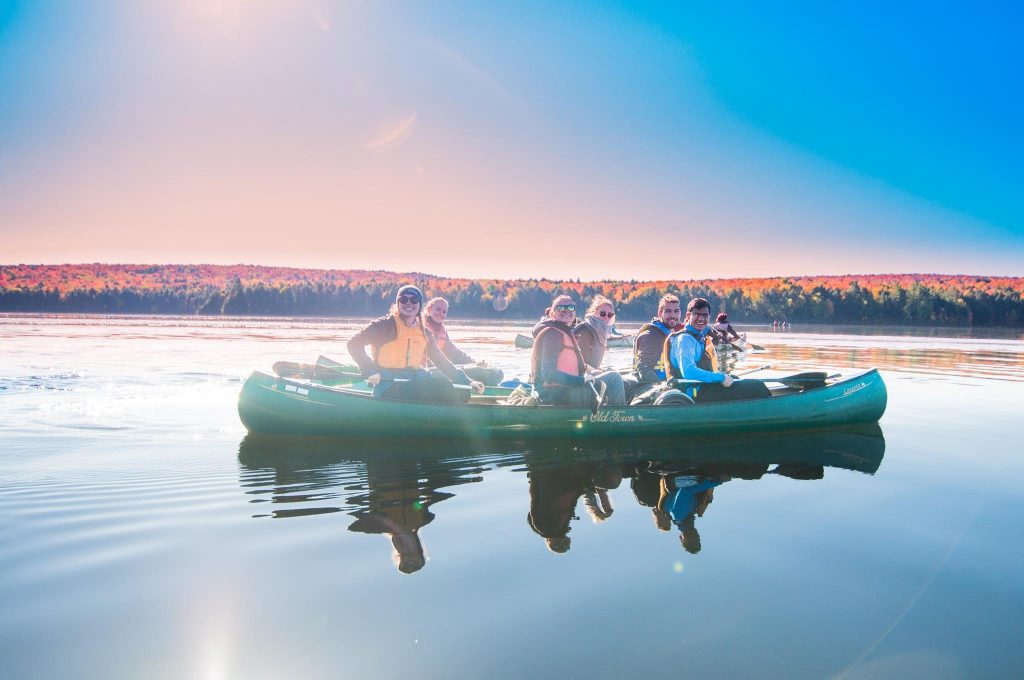
Northwest Territories
The Northwest Territories of Canada are notorious for their waterways and scenic routes. This is the area where the canoe was born, so what better way to celebrate its history than canoeing one of the very rivers where they were first used? The area is perfect for flatwater canoeing as there is a lot of calm water here. Take a load off, relax and enjoy the view.
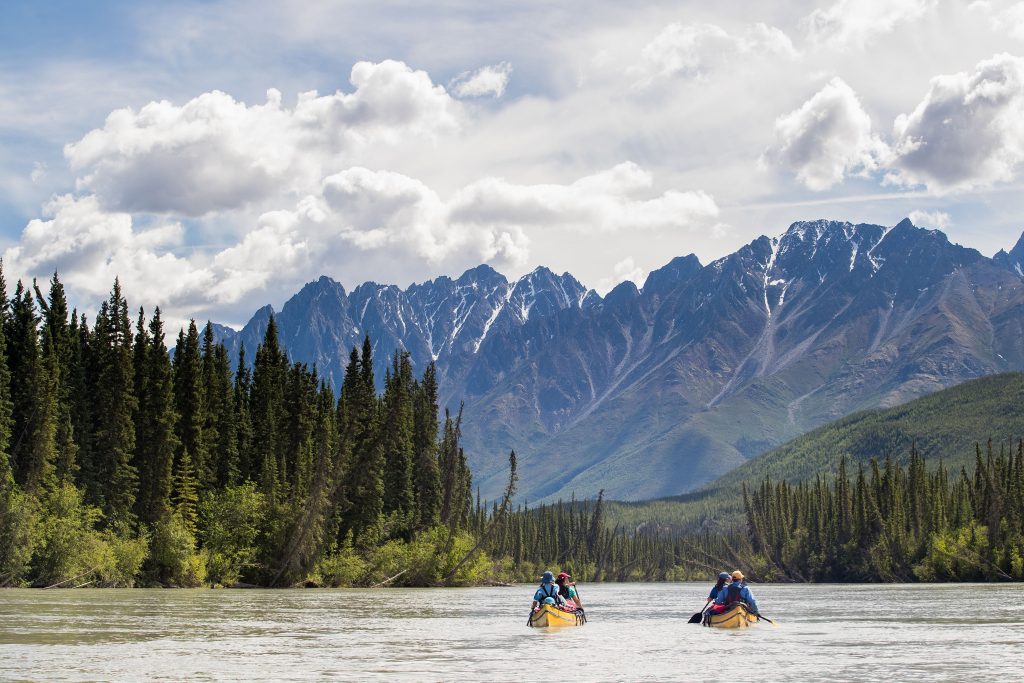
Whitewater Canoeing
Manitoba
Looking for a bit more adventure and rugged, boreal river terrain? Try whitewater canoeing in Northern Manitoba. Manitoba has over 100,000 lakes for flatwater, but it also has a ton of whitewater rivers too.
Consider the Bloodvien or Seal Rivers – two iconic rivers with amazing scenery, history and whitewater adventure. If you don’t have the skills to do one of these trips yourself, there are also guided options.
With that many options, beginners and pros alike can find something to their liking. Manitoba is one of the best places if you are looking for a whitewater experience with big waves.
Northern Quebec
For the more experienced whitewater canoe enthusiast, Northern Quebec has an almost endless supply of rivers. The Broadback, Magpie, Moisie and George rivers are just a few of the many iconic rivers here.
The scenery is incredible and you can’t go wrong on any river you choose. There are canyons, mountains, greenery and wildlife galore to experience in Northern Quebec.
There are numerous places that do guided canoe trips that will since the whitewater requires so much experience, so be sure to do your research because venturing off to this incredible area.
With plentiful rivers, Northern Quebec is the perfect area for whitewater canoeing.
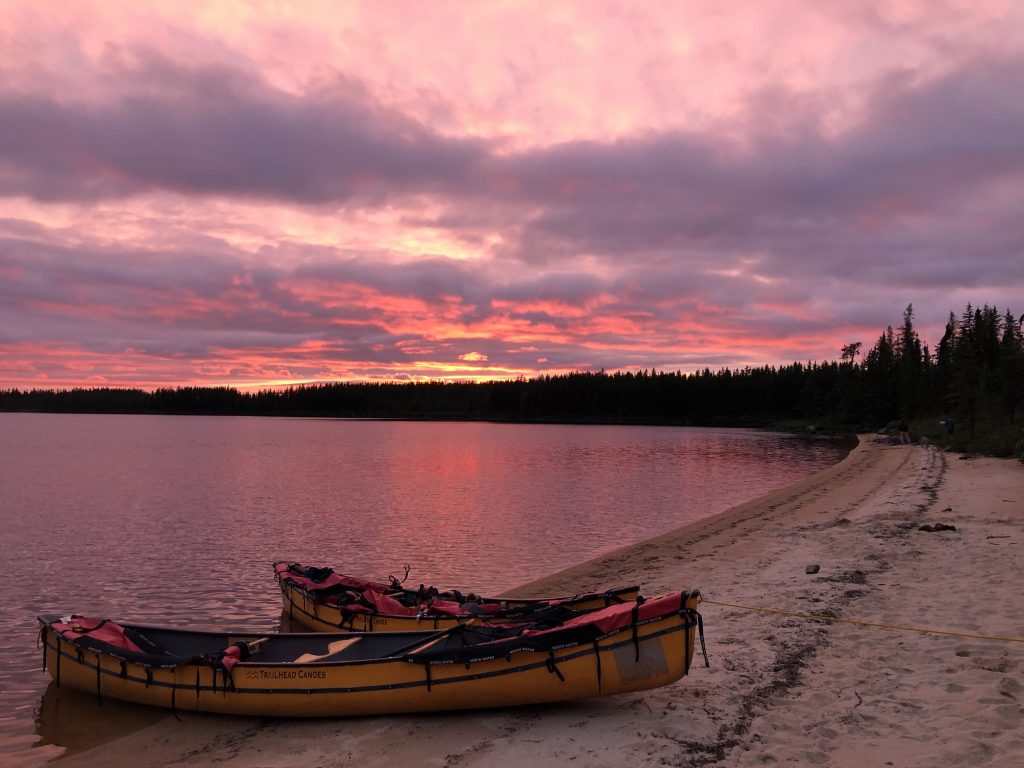
Ottawa Valley
Looking for the ultimate plate to go whitewater kayaking? The Ottawa Valley is known as the Whitewater Capital of Canada, so you should probably check it out! It’s home to some of the faster and safest rivers in the entire country of Canada, so kayakers of all experience levels can find something enjoyable.
The Ottawa Valley also hosts many events each year involving whitewater sports. If you are an experienced kayaker looking for a competition, you will most likely find one in Ottawa Valley.
Rivers in the Ottawa Valley:
- Ottawa
- Madawaska (trip report for this river here)
- Bonnechere
- Petawawa (I have a trip report on this river)
- Dumoine (I have a trip report on this river)
- Mattawa (trip report)
- Coulonge (also paddled this one)
- Noire (paddled this one too!)
- And more!
Many of the places above are also great for whitewater kayaking.
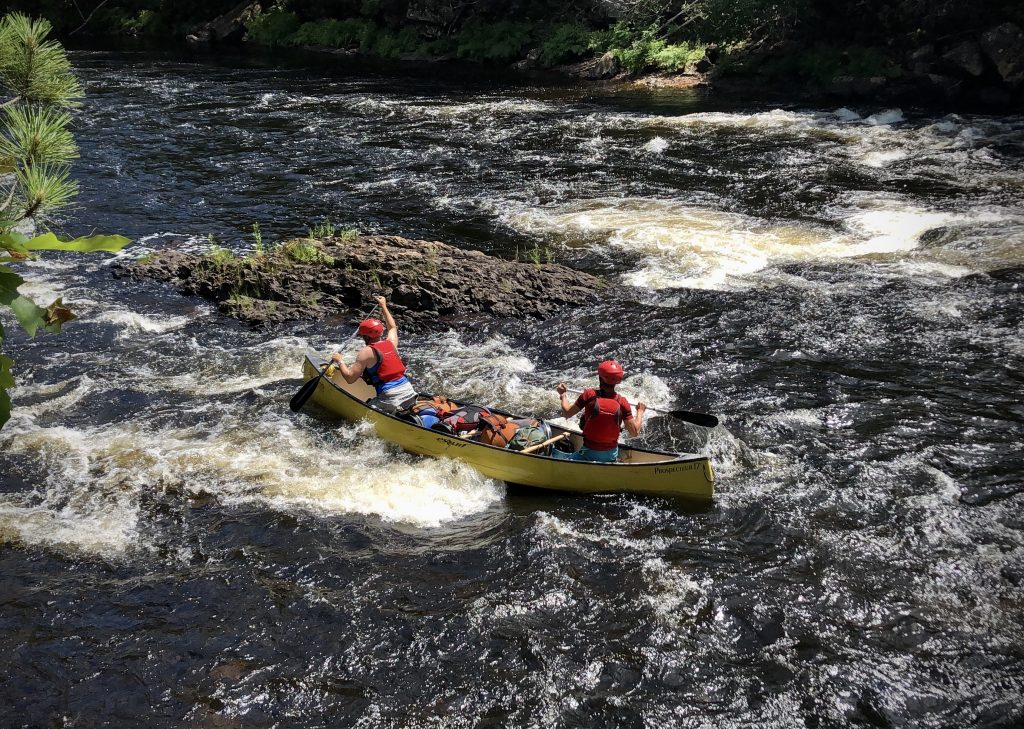
Whitewater Kayaking
Squamish
Squamish is also home to many rivers perfect for whitewater kayaking. There are different types of rivers for all skillsets here, as well. One of the most popular choices is going to be whitewater kayaking, and it’s recommended that these rivers be paddled only by those with some experience on the water:
- Ashlu Canyon
- Mamquam
- Squamish River
- Alice Lake
- Squamish Estuary
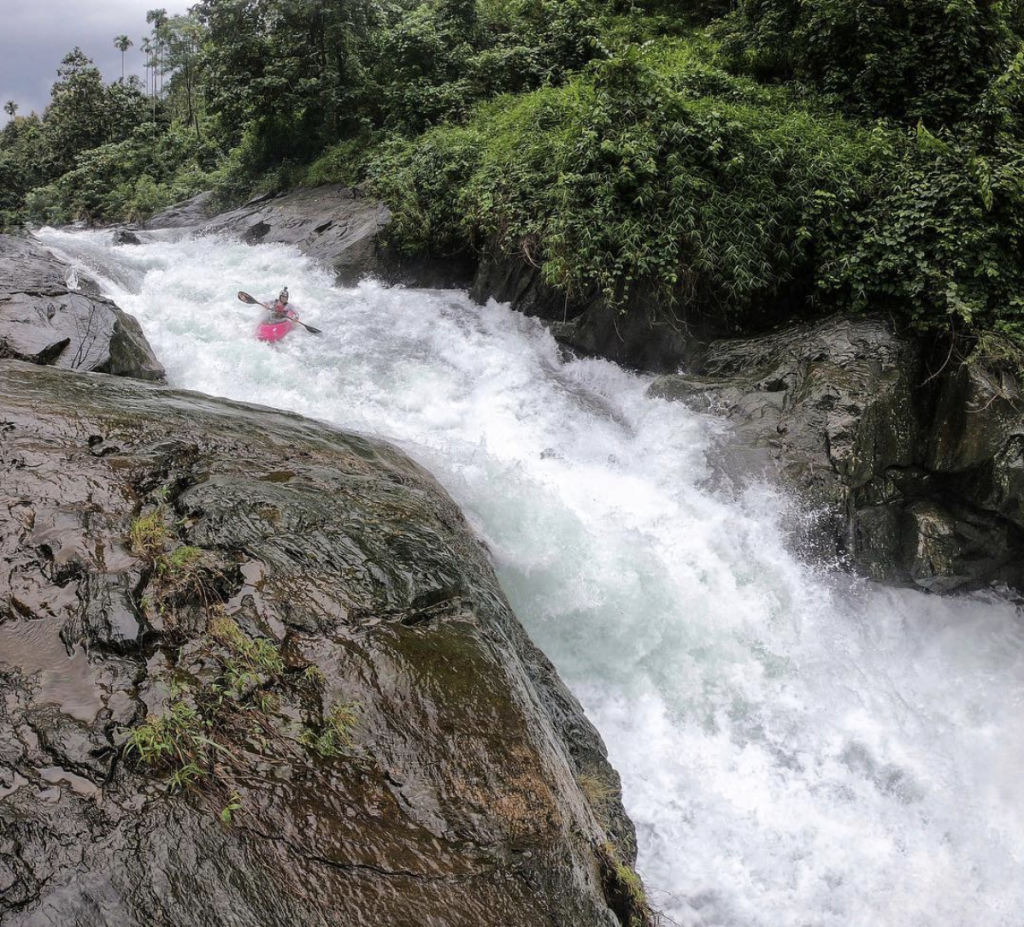
Sea Kayaking
Inside Passage (British Columbia + Alaska)
The Inside Passage is also known as the Marine Highway or Inland Passage. It is more than 1,000 miles long and stretches from Seattle, Washington to Skagway, Alaska. That’s a long trip! This route is definitely for the experienced kayaker. If you are interested in kayaking the Inside Passage, it’s going to take research and a lot of planning.
The Inside Passage is protected from the open ocean by land, but it is still cut off from civilization. If you are planning to kayak from Seattle to Alaska, it can take around 90 days according to those who have done it. Make sure you are prepared for your adventure and consult with a guide before embarking on this incredible trip.

Arctic and Antarctica
Hands down one of my favourite places for sea kayaking is the arctic ocean (though I’ve heard Antarctica is a great place as well). Here you can kayak among towering icebergs or spot beluga whales. Since the water, at its warmest, is barely above freezing, you’ll need proper dry gear and the guidance of someone experienced.
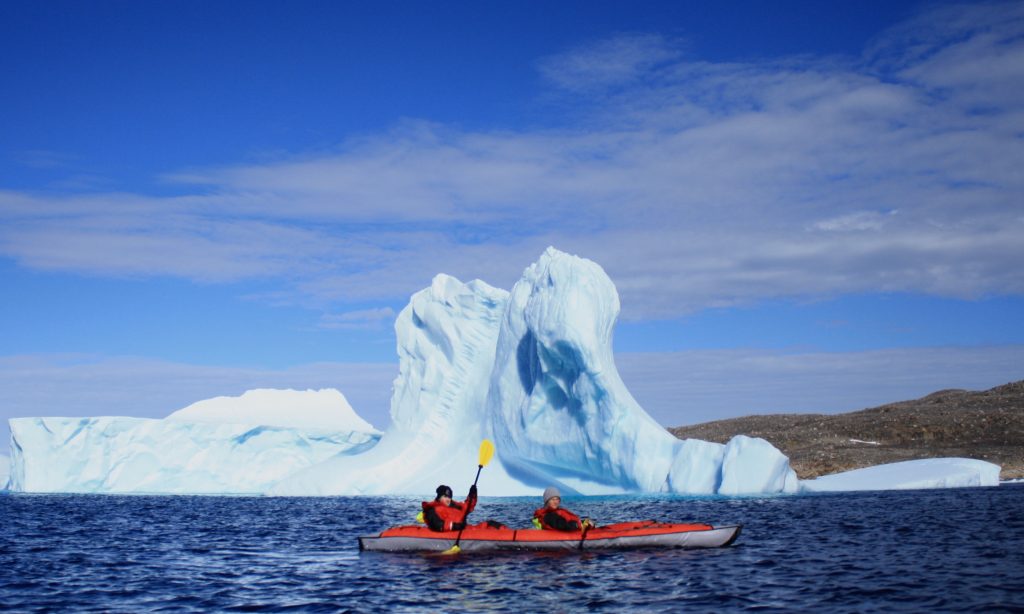
New Zealand
There’s no better place for sea kayaking than New Zealand. Being an island, New Zealand is made up of many coastal towns and people spend a lot of time on the water. Not only is there plenty of opportunities to be on the water, but the scenery is also incredible. New Zealand has over 9,000 miles of coastline, so there is much to see and do.
Since you will be on the open ocean, New Zealand is best for sea kayaking. This requires a kayak around 14 feet long to make it easier to control in the rough ocean water. Some of the best places to sea kayak in New Zealand are:
- Abel Tasman National Park
- Goat Island
- Queen Charlotte Sound
- Milford Sound
- Auckland
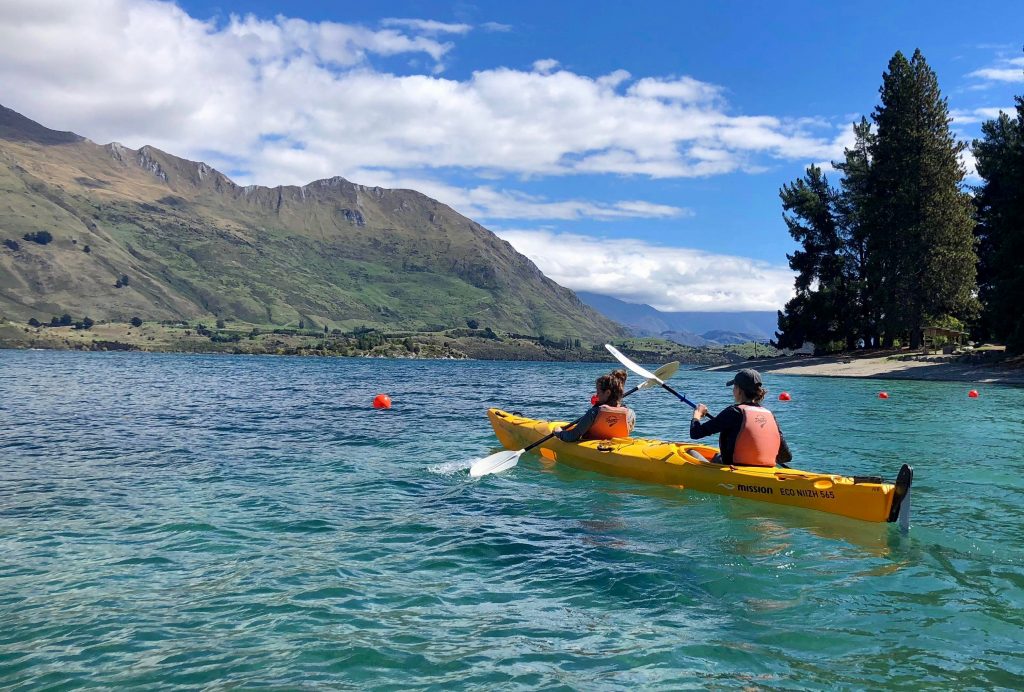
Canoeing vs Kayaking: Final Thoughts
To sum it up, canoeing and kayaking are both fun and great for paddlers of all experience levels. Deciding which is best is ultimately up to your preferences and what you’re comfortable with. There are so many sights to see that will make your adventure on the water memorable. Be sure to do your research and always practice safety on the water. Happy paddling!
Источник: https://www.voyageurtripper.com/canoeing-vs-kayaking/
